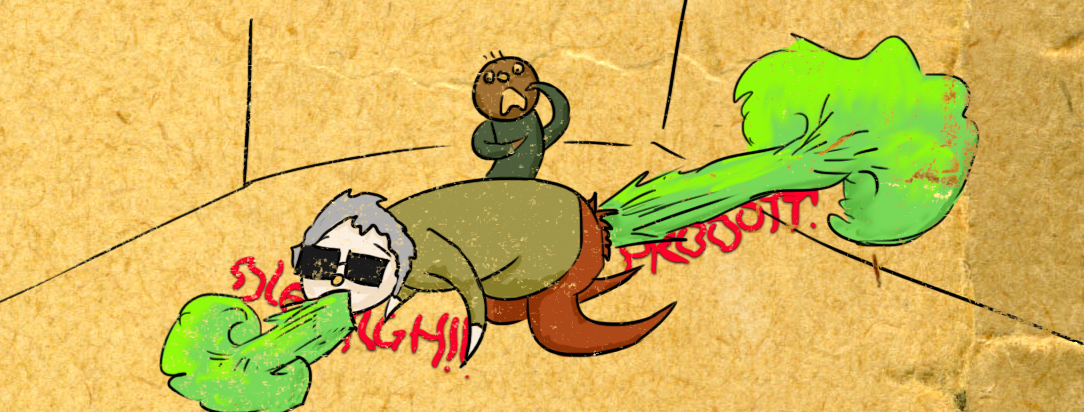April 26 marks the 31st anniversary of the Chernobyl disaster. Although great efforts have been made to mitigate the effects of this nuclear meltdown (such as the New Safe Confinement dome), it has long been known as a hazardous site, and there are still massive radiation risks.
It got me thinking. What does radiation actually do to a person? My first assumption was that it turns folks into horrible, post-apocalyptic mutants – but we know that to be fiction. So, like … do you just die instantly of some type of cancer?
Let’s find out.
Radiation context: How much, and where from?
Ionising radiation is what we’re talking about today – infrared, UV and other types of radiation will not necessarily cause the same effects.
Now, you may have heard from media like “Fallout” the radiation absorption dosage unit called a ‘rad’. However, this is being phased out, and today we’ll be referring to sieverts (see-verts), which measures effective dosage of radiation.
We receive tiny dosages of sieverts every single year, just naturally from living on planet Earth.
We receive tiny dosages of sieverts every single year, just naturally from living on planet Earth (~3 mSv). Bananas also transmit micro amounts of radiation, as does sleeping next to a human, or living in a concrete house or receiving treatment such as an abdominal CT scan (10 mSv). All of this is completely safe.
But if you were to receive a full sievert in one go (bearing in mind an Sv is 1,000 mSv, says the WHO), you’re going to get sick, according to a chart by former NASA roboticist Randall Munro. About 8 Sv is see ya later alligator, but sadly, not after a while, crocodile (because you’re dead).

Contamination
You can become contaminated in a variety of ways during the post-nuclear fallout, and the real fucker is when it gets inside you. Radiation cannot be seen, smelt, heard or touched, but it will be carried on particles of dust or liquid when the bombs have dropped. If this stuff gets inside you? That’s real bad news. If it gets on you? That’s also bad news – and you become a risk to yourself and others. Hell, even your piss can be contaminated.
Negative health effects of radiation
Contamination from a sufficient sievert dosage will cause acute radiation sickness within 24 hours. Depending on the dose, these symptoms could be as minor as nausea, headaches and a little bit of vomit, to power-chucking, diarrhoea or cognitive impairment.
The more you are exposed to radiation, the worse it’s going to be.
But those are the immediate effects, and of course the more you are exposed, the worse it’s going to be. Radiation even at the lower levels can cause leukopenia, a decrease in your white blood cells that leaves you open to infection. At greater exposures, and as time proceeds, you risk haemorrhaging, purpura, more vomiting, more diarrhoea, and eventual death.
Death can take up to 8 weeks at lower fatal levels, or be as quick as two days.

Radiation and cancer
But assuming you aren’t dosed enough to die, your risk of cancer may remain. According to the linear no-threshold model – used to set regulatory limits on radiation exposure, which will seem laughable after the bombs drop – cancer risk is present even at very low levels of radiation, and increases proportionately with exposure. This is essentially a “no safe amount” policy when dealing with man-made radiation.
Some scientists have in the past disputed the LNT model’s accuracy.
Although I should point out that some scientists have in the past disputed the LNT model’s accuracy.
Negative health effects on unborn children
According to the World Health Organisation, an acute dose of radiation above 100 mSv on an 8-15-week foetus increases the likelihood of brain damage in the child. At 16-25 weeks, a dose exceeding 200 mSv can cause the same risks.
Notably, though, the WHO states that pre-week-8 foetuses and post-week-25 are not at risk at these radiation levels.
In closing
If you are stuck in a world where post-apocalyptic fiction like the Crumble Bulletin is slowly mutating to life, you need to take very serious precautions when it comes to radiation.
That means avoiding contaminated sites as much as possible, and if you do come into contact with particles, you need to strip off all your clothing and wash immediately. It also pays to keep open wounds away from the material and to avoid fellow humans unless you wish to harm them, too (death by hug).
If this article gave you a series dose of radiation sickness and you’re now an addict, subscribe to the Crumble Blog below (mobile) or with the sidebar (desktop) and follow Duncan P. Pacey on Facebook or Twitter.



